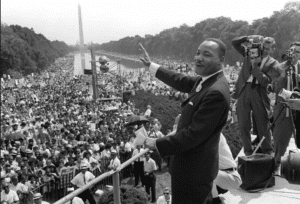Fox News: Reparations activists come for the children

The California Reparations Task Force hopes that its final report and recommendations will be “an example for not only other states but this nation as a whole…” Berkeley Unified School District is among those hoping to take its cues from the state task force.
But because the state task force’s recommendations advantage or disadvantage students based on race and ancestry, the district would be wise not to follow that example.
Berkeley Unified formed its own reparations task force “in response to the legacy of the system of enslaving Black people.” Berkeley schools have a tenuous claim to that legacy—California was admitted as a free state, and Berkeley Unified was the first major school district to voluntarily desegregate its schools. The state task force’s report even cites Berkeley Unified policies as a model for improving access to public schools, lauding the district’s elementary school admission process that uses “diversity categories” to assign students. The report notes the high racial integration across the district that resulted from this admission process.
What more then must the district do to address racial justice? If it is already a model for racial equity in school access, it must demonstrate why reparations are still necessary.
Nonetheless, the school district task force has been meeting since April to develop its recommendations for providing reparations to students who are descendants of slaves. To that end, members were encouraged during their June meeting to review the state’s report and invite the state task force to speak to them about its recommendations for public education.
The state task force’s recommendations for students and their teachers, featured in Chapter 23 of the report, are a variety of separate and unequal policies that distribute opportunity by race and ancestry. And the children will be worse off because of it.
The state task force recommends direct additional funding to African American students and funding to provide free tuition for students eligible for reparations. It also proposes funding for African American students experiencing discrimination at school to have “healing circles” or “sharing circles.” But imagine the students denied this funding because they are of a different race or have the wrong ancestors despite their disadvantages.
The state task force further recommends policies for increasing access to advanced coursework specifically for African American students, with special consideration for descendants of enslaved persons. They include covering the costs of exams, transportation, books, and other required materials for advanced coursework. They also include investing in preparing, recruiting, and supporting African American teachers and counselors. There are certainly students and teachers of all colors that could benefit from this assistance but will be deprived of it because they aren’t of the state’s preferred race or lineage.
They likewise recommend that the legislature establish a fund or scholarship program to pay for African Americans pursuing education degrees. This is because of the importance to the task force of students having “at least one teacher who looks like them.” Never mind the importance of a teacher that can teach well, regardless of their skin color. This sort of racial window dressing, as Justice Thomas remarked of similar efforts in higher education, “seeks only a façade,” in which it is sufficient that teaching staff “looks right, even if it does not perform right.”
Student discipline is also targeted, with the task force recommending that schools implement “racially equitable disciplinary practices using culturally responsive positive behavioral interventions and supports.” Determining how to discipline a student based on race is fundamentally unfair and simply wrong. Teachers should not decide to discipline students or refrain from disciplining them based on their students’ race.
Ultimately, if the legacy of slavery is systemic racism, the answer is not to inject more race into the system. But as these recommendations demonstrate, that is exactly what the state task force seeks to do. If Berkeley Unified follows these recommendations, it will diminish its students’ individuality and reduce them to arbitrary racial categories to correct conduct from our nation’s history that they did not engage in. No student should be impugned or victimized because of their race or lineage.
Fortunately, the law would protect students if the district pursues the state task force’s discriminatory policies. Thanks to Proposition 209, California’s Constitution categorically prohibits the district from discriminating against or granting preferential treatment to individuals or groups based on race or ethnicity in public education. The Fourteenth Amendment to the U.S. Constitution likewise forbids Berkeley Unified from treating its students differently based on race. And after the Supreme Court’s recent decision ending affirmative action in college admissions, it should be clear to every school district that “[e]liminating racial discrimination means eliminating all of it.” That includes our K-12 schools.
California can acknowledge the past without continuing the sordid business of racial distribution. All students, regardless of their skin color and ancestry, deserve the opportunity for a quality education. Such an example is a much better and more constitutional one for the state to set and for Berkeley Unified to follow.
To continue reading this op-ed, visit Fox News.













